eyema-byeri height 13 5/8in (34.5cm) Provenance Marcel de Schryver, Galerie Témoin, Geneva Charles-Edouard Duflon, Galerie Témoin, Geneva Eduardo and Miriam Uhart Collection, Paris, Barcelona and Chile Carbon-14 Test, conducted by Dr. Georges Bonani, Zurich, 2001 indicating a 95% probability that the wood dates from 1672-1946. A radiography (X-Ray) performed in 2004 indicate bone implants in the ears. Published A4, January 2007 about the exhibition Gabon: The Art that came from the Forests at the Museum Haus der Völker in Schwaz, Austria. A letter from Louis Perrois dated 28 June 2004 accompanies the work which translates: LOT 101 – revised translation, p. 121 "This wooden head has dark patina and is oozing, 32.5cm, from the Schryver collection of Geneva (an object that would have been part of this collection in 1947, collected between 1910 and 1920 in the French Congo) is an ancestor effigy which would have been placed on a sewn bark chest containing lineage relics. The general appearance and patina seem to indicate that it is an old piece. This item immediately makes you think, of course, of one of the works from the old Helena Rubinstein collection--a famous braided head, 35cm, with a very oozing wood, which was previously in the exhibition Afrique-Océanie, Paris, Galerie Pigalle, 1930. A masterpiece of remarkable sensitivity (volumes, finishing details and surfaces.) The heads adorned with this type of hairstyle are a little unusual with three large parallel braids culminating more or less above the forehead and falling on the neck by molding along the curvature of the skull. They are not very numerous: one, from the old H. Cora collection (27cm) was exhibited in 1967; another, 30cm (received in a European collection in 1914 - No. 193) was published by Ulrich Klever in Bruckmann's Handbuch der Afrikanischen Kunst, Munchen, 1975; another, a 23cm head, from the former Josef Mueller collection, Geneva (before 1939). We can also think of the upper part of a famous statue, 64cm, from the old collection of A. Derain, J. Epstein, published by Clouzot and Level in 1920, today at the Metropolitan Museum of Art, New York (cf. Fang, Dapper, 1992, p. 128). Even if the headdress has only two large braids, they culminate in two little buns-balls on the top of the forehead. The present head, 32.5 cm, is of a generally greater and more narrow volume than that of the Rubinstein head with very rounded and full form. It can also be noted that the diameter of the neck is substantially larger. Under the forehead, wide and quarter-sphere, the face is hollow, the two arches on the brow resting on the nose which is quite short and flat. An unusual element is the mouth in "tube" form: open, lips stretched forward and striated as to indicate teeth(?). This particular anatomical detail is usually found, as we know, only on the ngumba parts from South-Cameroon (cf. Fang, Dapper, pp. 136-138). Of course, we notice that the Rubinstein head has a mouth with rounded lips and small chips which do not allow us to fully imagine the initial shape (like the semi-open mouth of the Trilles 1902 head in the Ethnographic Museum of Neuchatel). The eyes are raised, carved and slit. On the cheeks, parallel vertical streaks are probably marks of initiation. The raised ears are stylized and simply arched. An X-ray reveals that under the thick patina there are small bone fragments embedded in the wood--most certainly human relics. A wide headband grips the forehead behind the ears. Above, the cap has three large braids, whose front ends are decorated with pieces of glass fixed to the resin. They cover the skull obliquely to fall vertically on the neck (the braids at an angle, unlike the Rubinstein head whose headdress falls in a S curve with broad, faceted braids.) With such a contrasting morphology, this head, whose age is apparently correctly attested (according to the analysis of Dr. Georges Bonani, Zurich, this object dates back to the nineteenth century), can be a
eyema-byeri height 13 5/8in (34.5cm) Provenance Marcel de Schryver, Galerie Témoin, Geneva Charles-Edouard Duflon, Galerie Témoin, Geneva Eduardo and Miriam Uhart Collection, Paris, Barcelona and Chile Carbon-14 Test, conducted by Dr. Georges Bonani, Zurich, 2001 indicating a 95% probability that the wood dates from 1672-1946. A radiography (X-Ray) performed in 2004 indicate bone implants in the ears. Published A4, January 2007 about the exhibition Gabon: The Art that came from the Forests at the Museum Haus der Völker in Schwaz, Austria. A letter from Louis Perrois dated 28 June 2004 accompanies the work which translates: LOT 101 – revised translation, p. 121 "This wooden head has dark patina and is oozing, 32.5cm, from the Schryver collection of Geneva (an object that would have been part of this collection in 1947, collected between 1910 and 1920 in the French Congo) is an ancestor effigy which would have been placed on a sewn bark chest containing lineage relics. The general appearance and patina seem to indicate that it is an old piece. This item immediately makes you think, of course, of one of the works from the old Helena Rubinstein collection--a famous braided head, 35cm, with a very oozing wood, which was previously in the exhibition Afrique-Océanie, Paris, Galerie Pigalle, 1930. A masterpiece of remarkable sensitivity (volumes, finishing details and surfaces.) The heads adorned with this type of hairstyle are a little unusual with three large parallel braids culminating more or less above the forehead and falling on the neck by molding along the curvature of the skull. They are not very numerous: one, from the old H. Cora collection (27cm) was exhibited in 1967; another, 30cm (received in a European collection in 1914 - No. 193) was published by Ulrich Klever in Bruckmann's Handbuch der Afrikanischen Kunst, Munchen, 1975; another, a 23cm head, from the former Josef Mueller collection, Geneva (before 1939). We can also think of the upper part of a famous statue, 64cm, from the old collection of A. Derain, J. Epstein, published by Clouzot and Level in 1920, today at the Metropolitan Museum of Art, New York (cf. Fang, Dapper, 1992, p. 128). Even if the headdress has only two large braids, they culminate in two little buns-balls on the top of the forehead. The present head, 32.5 cm, is of a generally greater and more narrow volume than that of the Rubinstein head with very rounded and full form. It can also be noted that the diameter of the neck is substantially larger. Under the forehead, wide and quarter-sphere, the face is hollow, the two arches on the brow resting on the nose which is quite short and flat. An unusual element is the mouth in "tube" form: open, lips stretched forward and striated as to indicate teeth(?). This particular anatomical detail is usually found, as we know, only on the ngumba parts from South-Cameroon (cf. Fang, Dapper, pp. 136-138). Of course, we notice that the Rubinstein head has a mouth with rounded lips and small chips which do not allow us to fully imagine the initial shape (like the semi-open mouth of the Trilles 1902 head in the Ethnographic Museum of Neuchatel). The eyes are raised, carved and slit. On the cheeks, parallel vertical streaks are probably marks of initiation. The raised ears are stylized and simply arched. An X-ray reveals that under the thick patina there are small bone fragments embedded in the wood--most certainly human relics. A wide headband grips the forehead behind the ears. Above, the cap has three large braids, whose front ends are decorated with pieces of glass fixed to the resin. They cover the skull obliquely to fall vertically on the neck (the braids at an angle, unlike the Rubinstein head whose headdress falls in a S curve with broad, faceted braids.) With such a contrasting morphology, this head, whose age is apparently correctly attested (according to the analysis of Dr. Georges Bonani, Zurich, this object dates back to the nineteenth century), can be a

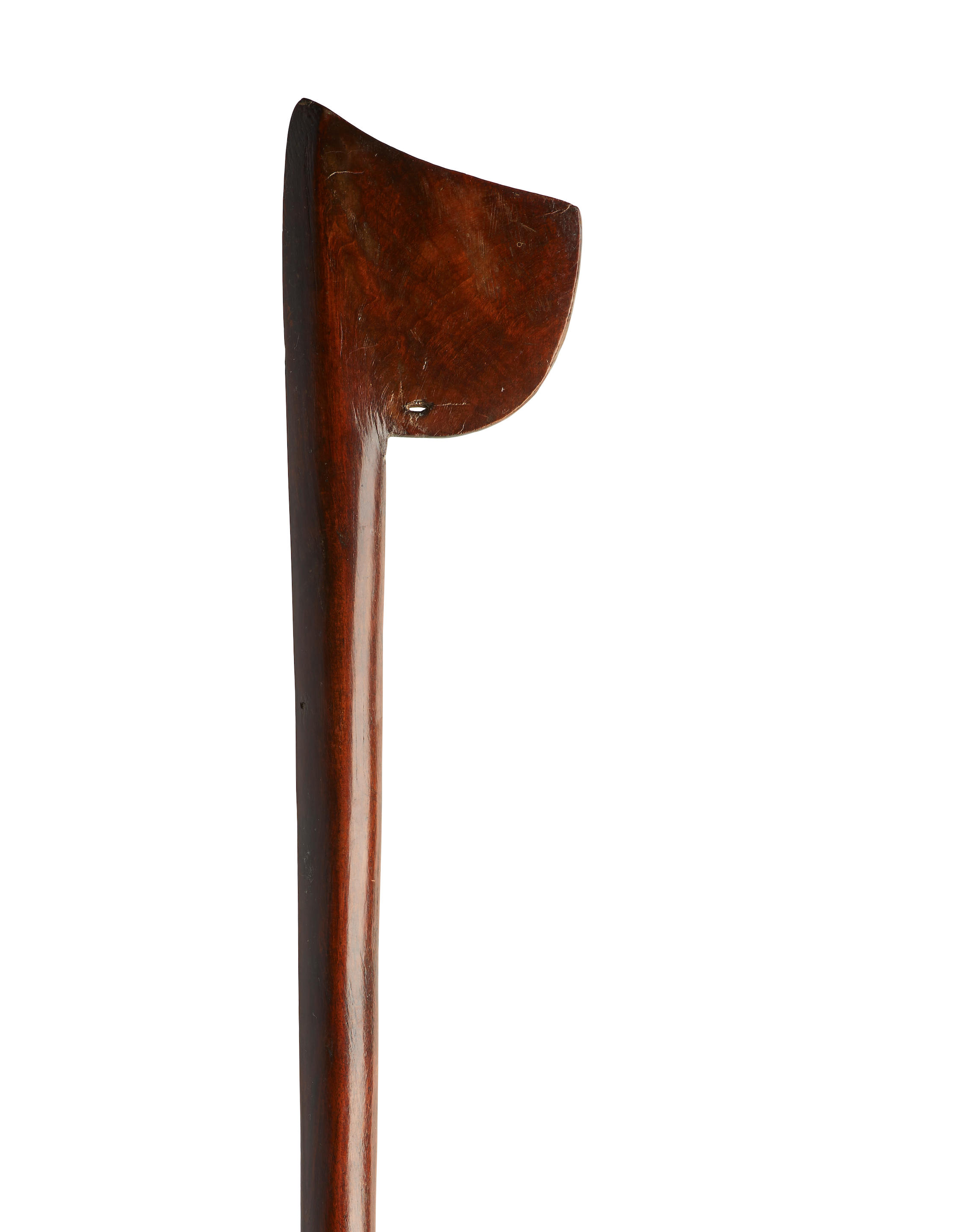

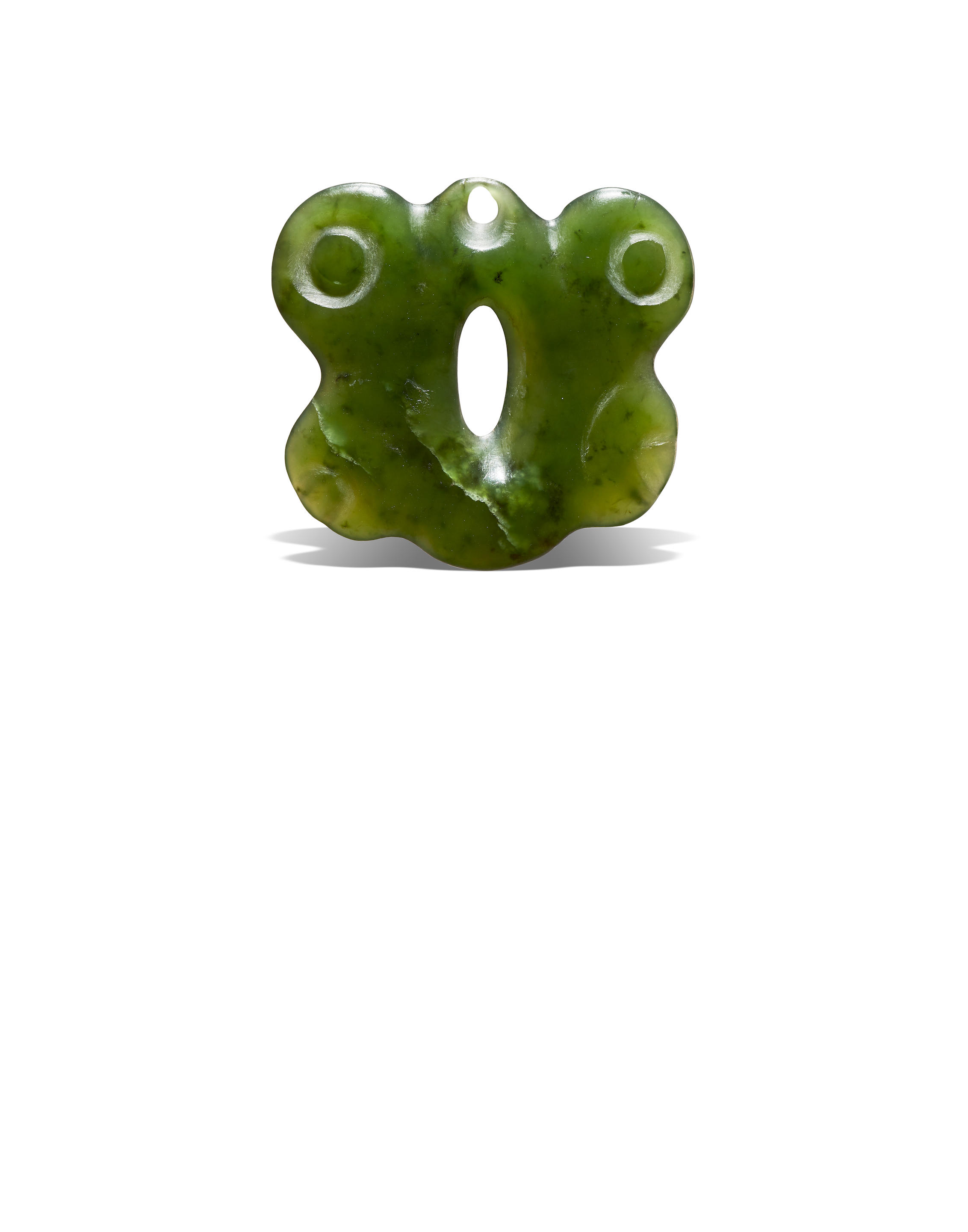
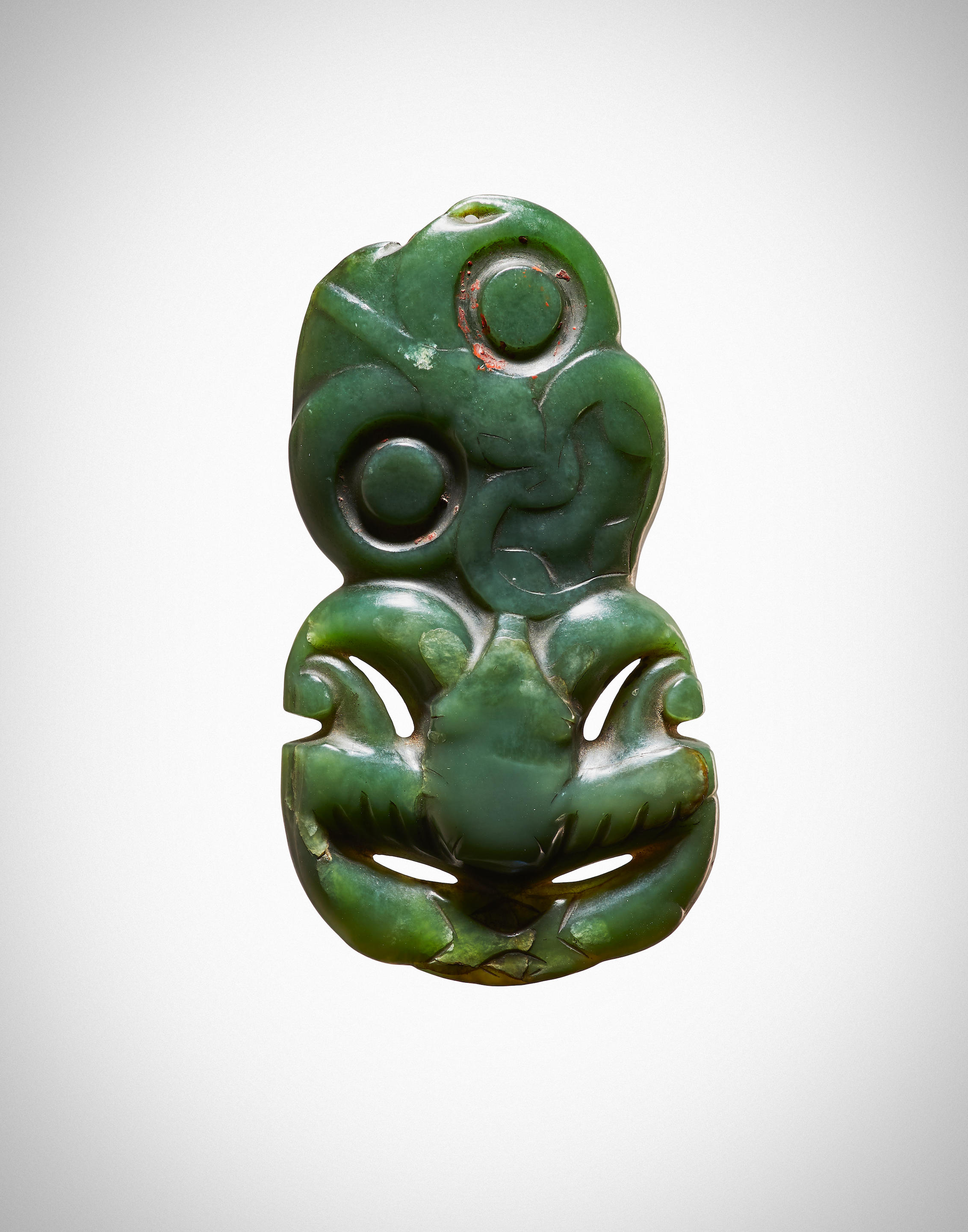

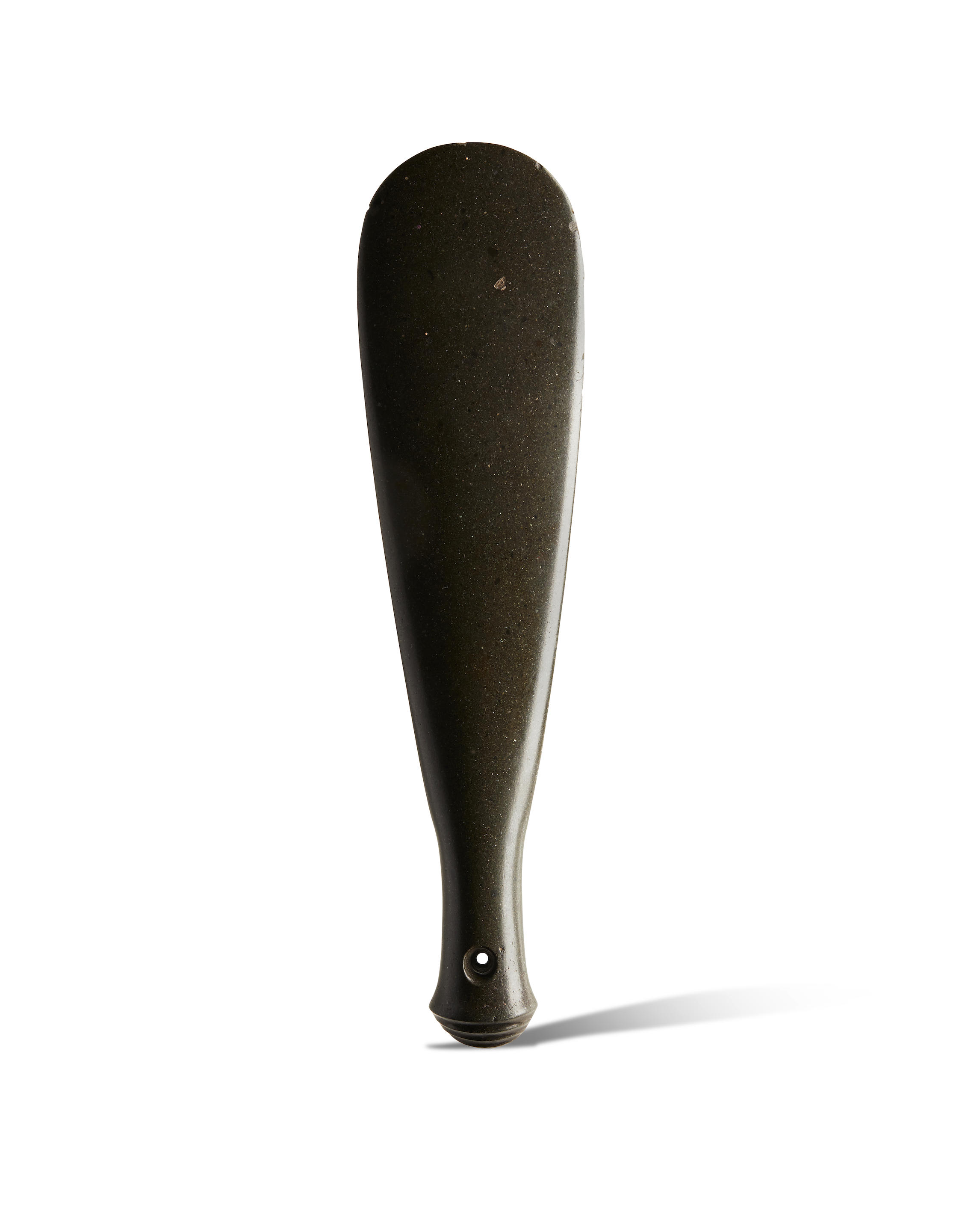
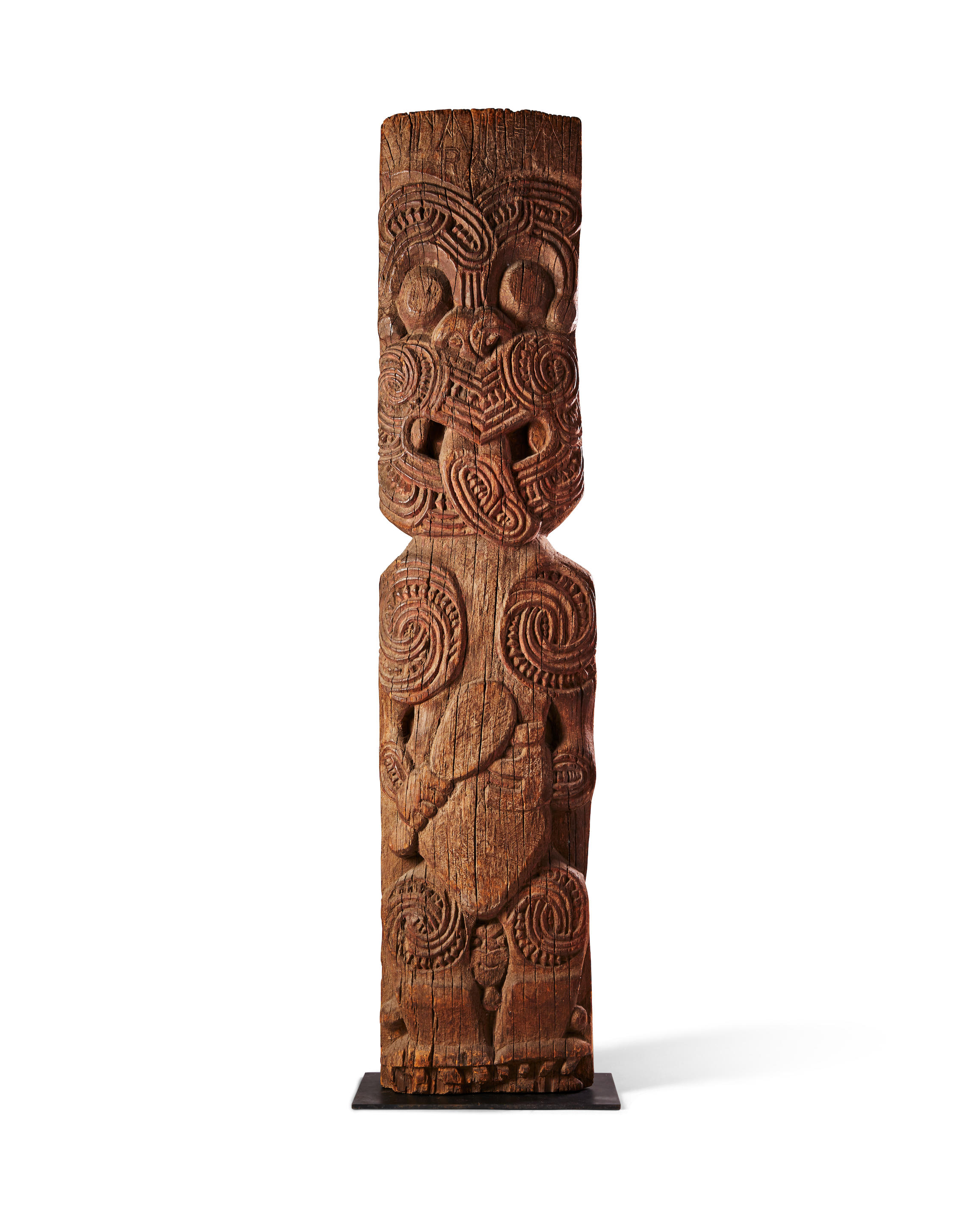
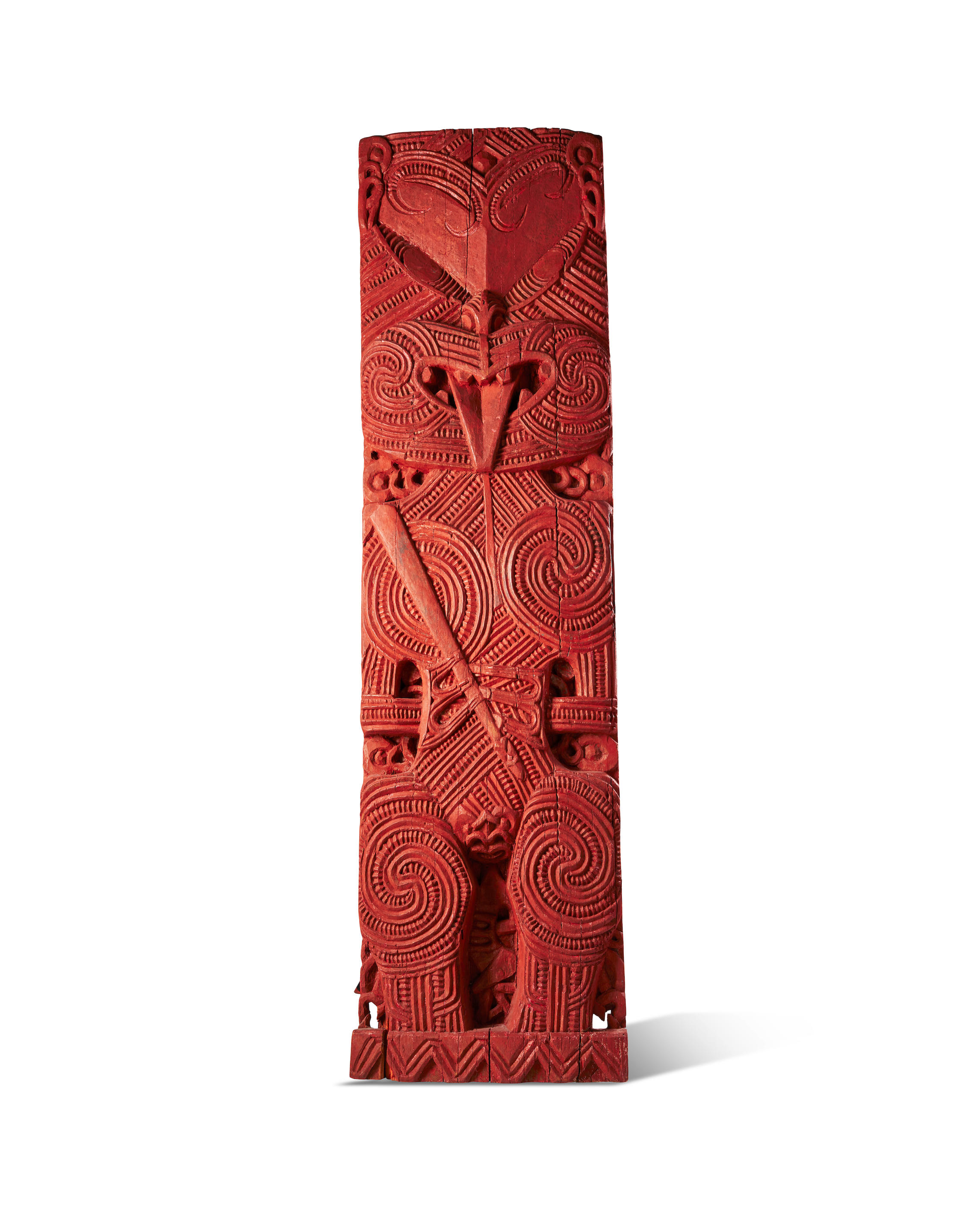

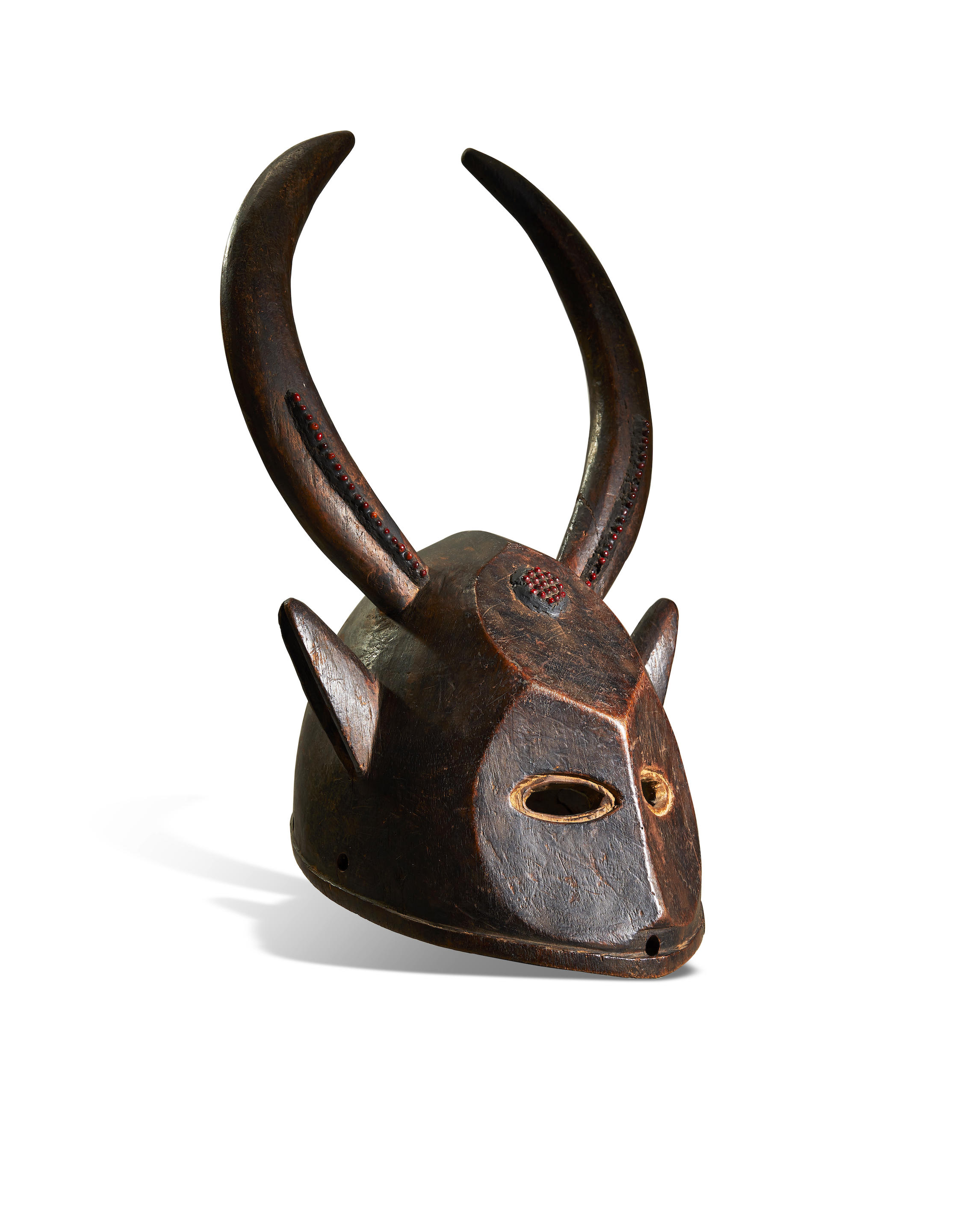
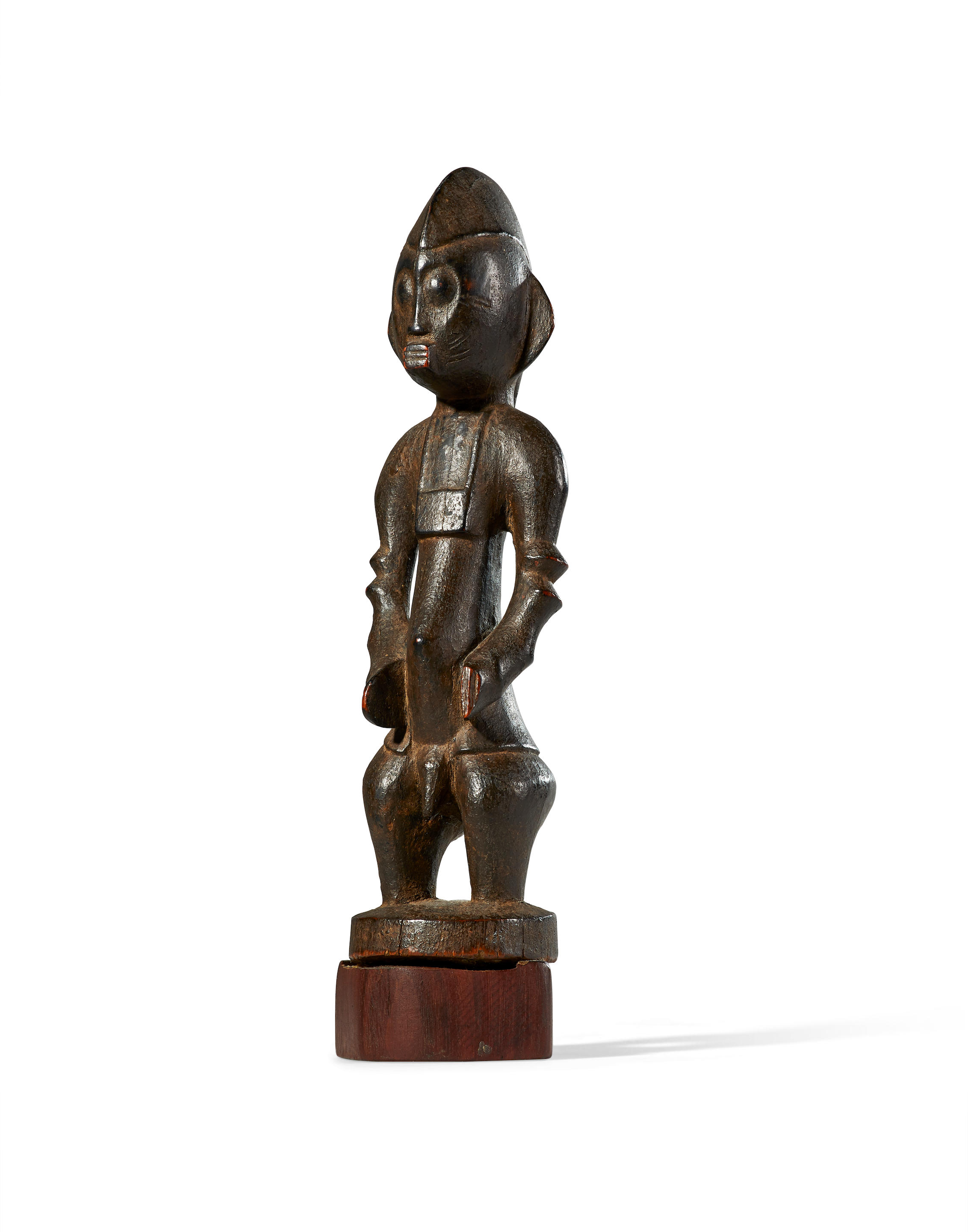
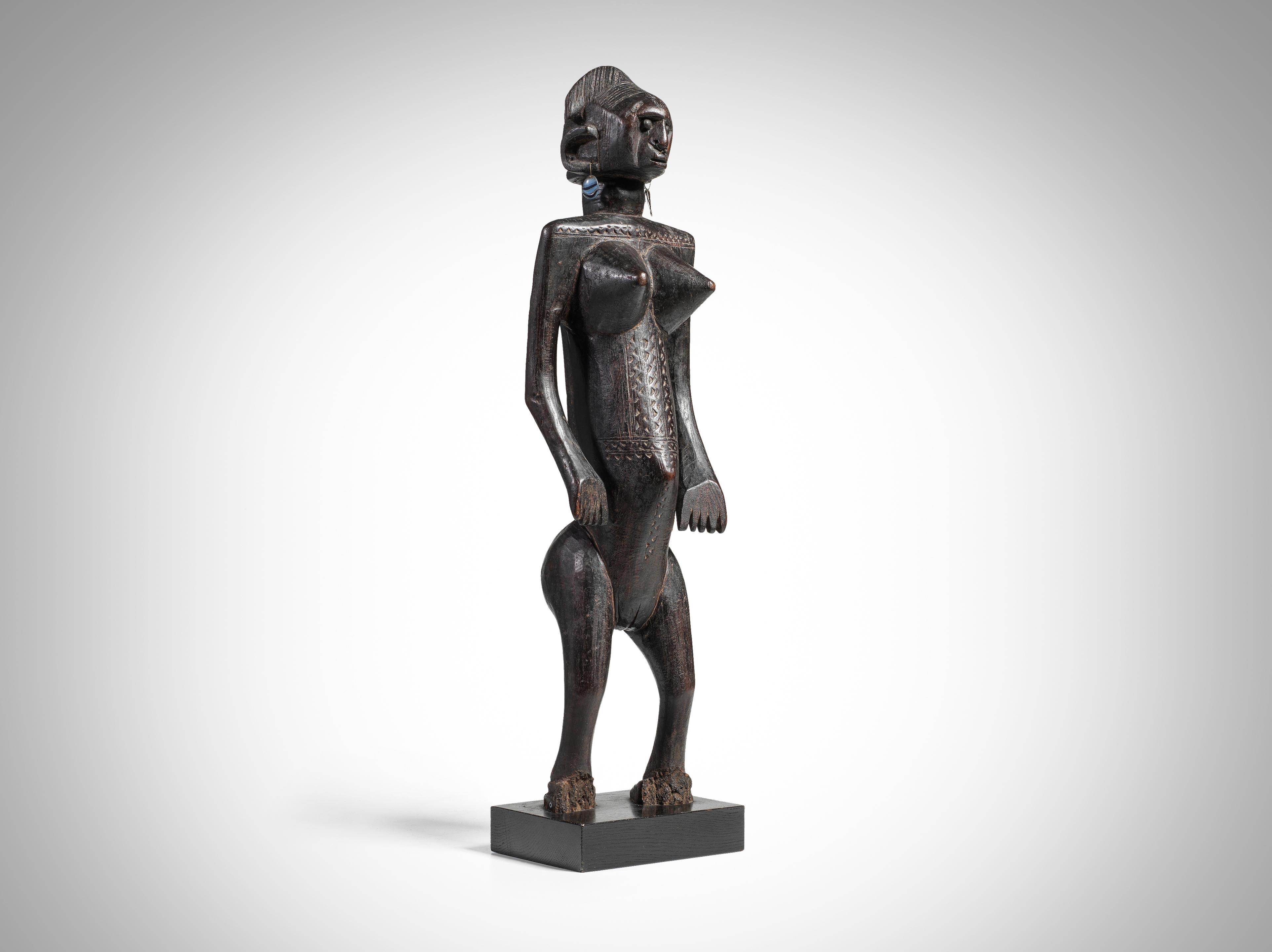
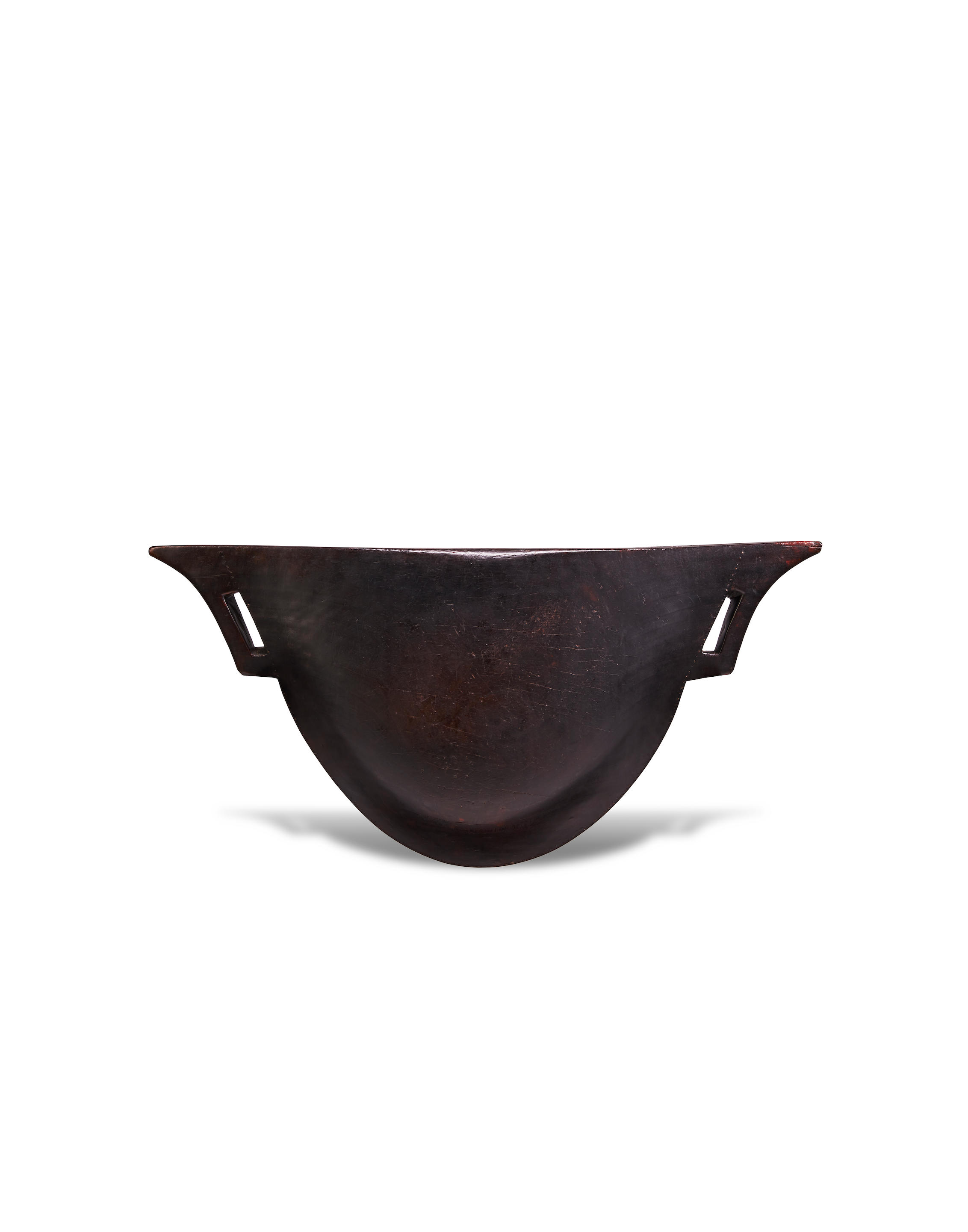
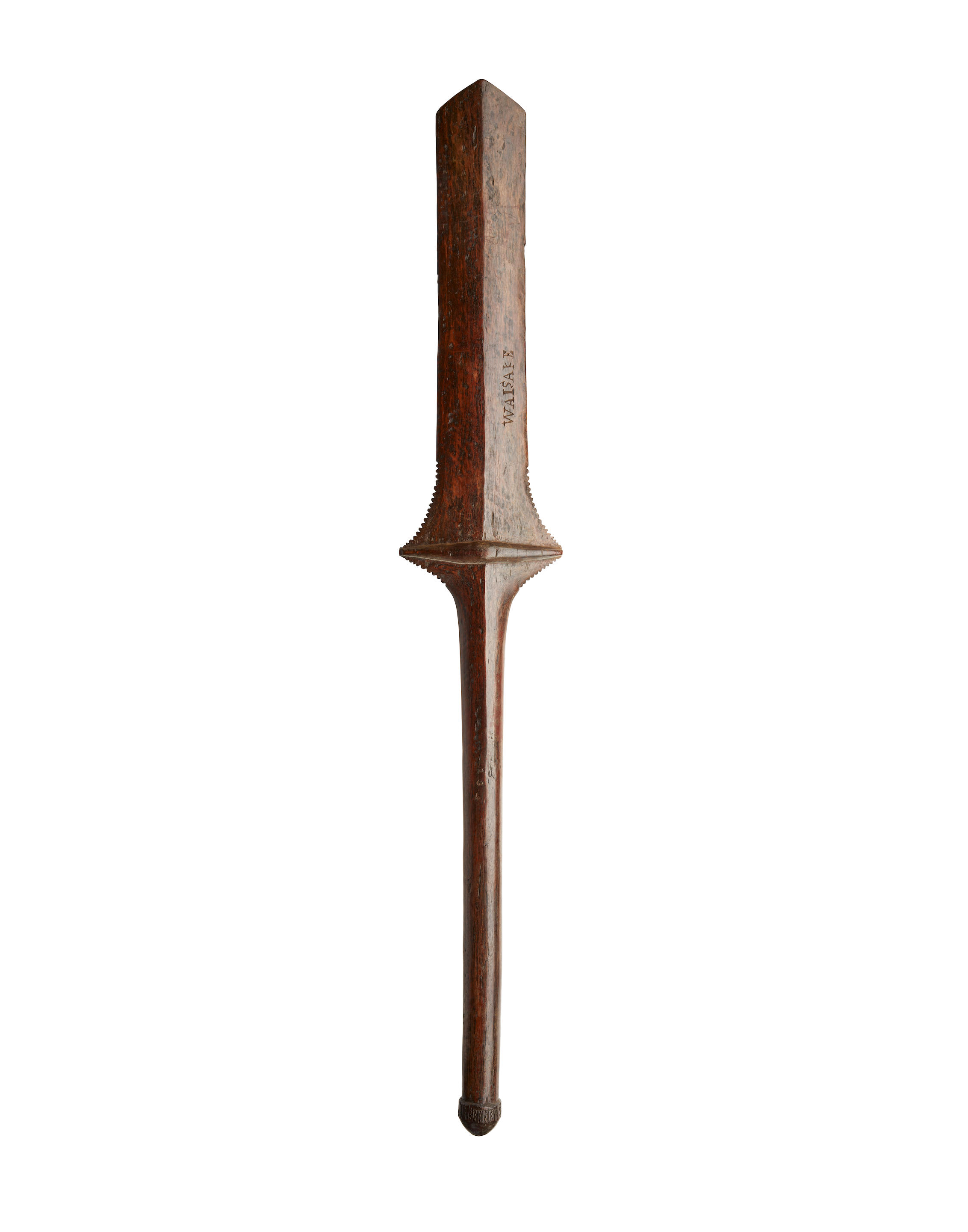
Try LotSearch and its premium features for 7 days - without any costs!
Be notified automatically about new items in upcoming auctions.
Create an alert